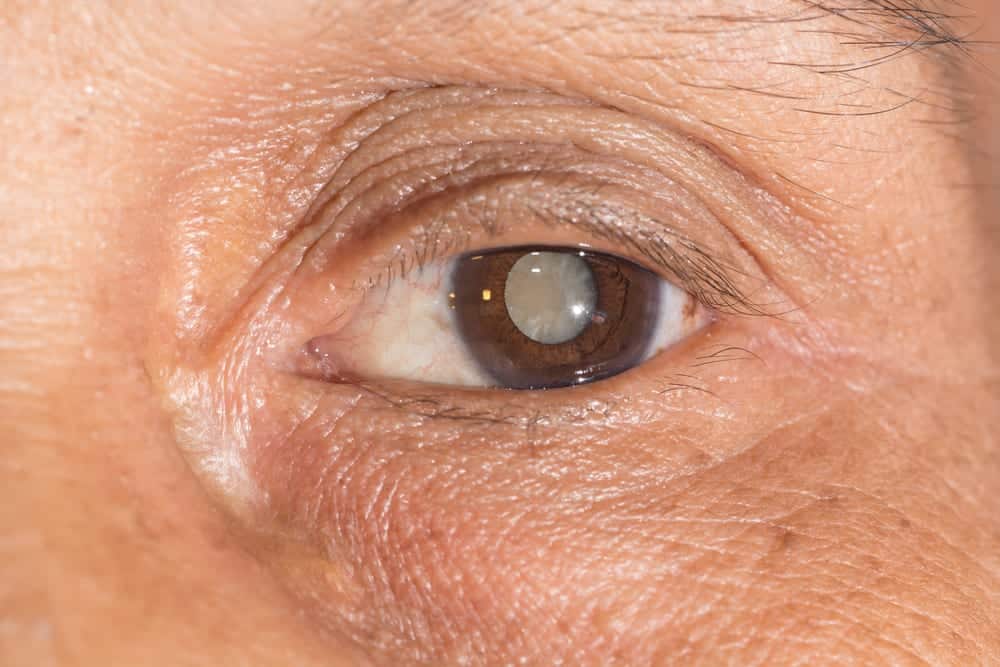Have you ever tried to look through a frosty window? If so, you may have an idea of how it feels to live with cataracts. People who have cataracts struggle to see through increasingly cloudier eye lenses, making it hard to read, drive, or see far-away details. But what causes cataracts? Find out how you can help prevent and treat this common condition.
What Causes Cataracts?
What Are Cataracts?
Cataracts are essentially cloudy areas located in the lens of your eye. This condition is surprisingly common, affecting more than half of all Americans over the age of 80. Cataracts can lead to blurry vision, trouble detecting color, and trouble seeing details. Fortunately, cataracts are treatable – but what causes cataracts?
Causes of Cataracts
Cataracts are the result of excess protein. This protein builds up in the lens of your eye, clouding it and making it harder for light to pass through. There are several common causes of cataracts:
- Age: As mentioned above, seniors are more susceptible to cataracts. This is because aging causes the lenses in your eyes to become thicker and less flexible. So, how does that work? Around the age of 40, the proteins located in the lens of your eye may start to clump together, creating a cloudy area on the lens. This area eventually develops into a cataract.
- Congenital Cataracts: Some babies are born with infantile, or congenital, cataracts. These can also form in childhood.
- Medical Conditions: Medical conditions like diabetes can damage your eyes and cause cataracts. Some medications like diuretics may also lead to cataracts.
- Trauma: Some cataracts form as a response to an eye injury.
Cataract Symptoms
Many adults live with mild cataracts for years, often not even noticing symptoms until the cataracts grow severe. There are several cataracts symptoms to watch out for:
- Cloudy or blurry vision
- Faded colors
- Double vision
- Ineffective glasses or contacts prescriptions
- Challenging night vision
- Light sensitivity
Preventing Cataracts
While cataracts may be an inevitable inconvenience for many adults, there are several lifestyle changes you can incorporate to slow the progression of cataracts:
- Quit Smoking: Smoking is a proven factor in cataract development, so make sure to ask your doctor for suggestions if you need help quitting. Heavy drinking can also lead to cataract development, so make sure to limit your alcohol intake.
- Manage Other Health Issues: If you have a medical condition like diabetes, make sure to carefully follow your treatment plan and check in with your doctor regularly.
- Choose a Healthy Diet: Make sure your diet is full of vitamins and nutrients, which can help stave off health conditions like cataracts. You should also ask your doctor about eating more fruits and vegetables with antioxidants, as these are proven to help maintain your eye health.
- Schedule Regular Eye Exams: Your eye doctor will be able to detect early cataracts. That means you’ll be able to initiate lifestyle changes that may reduce the condition’s severity. Do your best to make annual or semi-annual eye exams a priority, especially as you get older.
_____
While cataracts are an extremely common and relatively mild health issue, they can certainly be frustrating. Fortunately, there are several lifestyle changes you can make today to help reduce your risk of severe cataracts.
If you’re worried about cataracts, contact Heffington’s if you live in southwest Missouri. Since 1975, the Heffington family has been assisting the Springfield community with top-quality eye care and affordable eyeglasses and contacts. One of the unique features of our family-owned business is that we manufacture lenses at our own laboratory, giving us total control over the service and pricing, and we’re happy to pass our savings on to you. To learn more about our products and services, please get in touch with us online, send an email to asktheexperts@heffingtons.com, or give us a call at 417-869-3937 (Optiland location) or 417-882-3937 (House of Vision location). We look forward to hearing from you!

